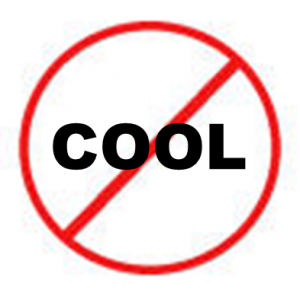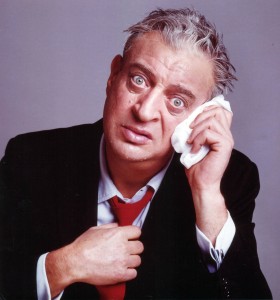Last May, our topic was all about whether radio has lost its cool factor. After a visit to the Canadian Music Week’s Radio Interactive conference in Toronto, we explored this topic, and this post put a point on radio’s new challenge to get a little R-E-S-P-E-C-T. The Best of JacoBLOG continues all this week. Thanks for reading it.
Last week, I was honored to moderate a great “connected car” panel at the Canadian Music Week’s Radio Interactive sessions in Toronto. Driving just four hours from Detroit, you enter a very different world of radio – a more optimistic, upbeat environment where the medium is vital and very much matters.
Case in point? The front page of the Globe and Mail’s sports section carried this headline, photo, and story:
As Dr. Ed Cohen reminded me, here was a prominent story discussing the monthly ratings of two competing sports talk stations in Toronto in one of the most respected newspapers in the country. That just doesn’t happen very often these days in the States.
When Mark Thompson (formerly of The Mark & Brian Show) joined KSWD in Los Angeles earlier this year, you wouldn’t have known it by reading the Los Angeles Times. And in recent months, his dominance over stations like KLOS and the others in L.A. has generated journalistic crickets. That’s the case in most major markets around the U.S.
That’s not just an indication of how newspapers in the States perceive radio – it’s a larger statement about how radio is being kicked around by just about everybody.
Sort of the Rodney Dangerfield of the media world.
At that same Canadian conference, a group of luminaries took the stage to discuss radio’s future, and Alan Cross (sort of the Canadian version of Sean Ross) moderated a panel that included iHeartRadio’s Darren Davis, Jeff Smulyan, Triton’s Paul Cramer, radio futurologist James Cridland, Jumpwire Media’s Gavin McGarry, and the BBC’s James Stirling.
The conversation quickly moved into “Where has radio gone wrong?” and Davis, Smulyan, and Cridland openly questioned whether that was the right question. Or even a fair one. As Cridland reminded attendees, 90% of the population listens to radio – in the U.S., Canada, the U.K., and in many other countries around the world – a usage level that is leaps and bounds ahead of every other audio platform and brand.
And that brought Tim Westergren’s comments at WWRS late last month. Covered here in JacoBLOG, the head of Pandora talked about how the “one button” simplicity of radio was the envy of other industries.
But there’s a huge disconnect because while broadcast radio still maintains incredible usage and ubiquity, it continues to be “disrespected.” Jeff Smulyan has been saying it for some time  now, and reiterated it again on this panel:
now, and reiterated it again on this panel:
Radio has lost its cool.
In the past, I’ve simply attributed this to an audience that is enamored with new, digital platforms and services. But now I’m beginning to wonder if radio’s perception problems aren’t more damaging among agencies, buyers, and advertisers than among listeners.
Consumers have many other choices but as we learned in Techsurvey11, even regular users of Pandora, Spotify, YouTube, and even satellite radio still recommend their favorite radio stations to others at about the same levels – or even higher. Just because they use pure-plays, video streaming channels, and other new media, their attachment to broadcast radio remains solid.
Every week, they tune in radio for play-by-play sports, they yell back at their radios during controversial talk shows, they uniquely inform and entertain themselves on public radio, they listen to familiar favorites on Classic Rock stations, and they discover new music on stations that specialize in Hip-Hop, Alternative, Country, and other genres.
Radio has its issues – clutter, a lack of personalization, homogenization, incessant budget cutting, and stations that sold their local flavor out to voicetracking. But when the vast majority of the population tunes in each week – more than reads newspapers, accesses streams, builds music playlists, or subscribes to satellite radio, well then what’s the problem? And why the lack of respect?
Sadly, it seems to be gaining steam, whether you talk to political consultants, account managers, or other media analysts – an “uncool” perception that is taking root faster and faster – and very much taking its toll on radio revenue, especially if you talk to broadcasters and follow their quarterly reporting.
At a time when the economy is adding jobs, automakers are selling cars, and consumer electronics is exploding, the radio industry should be doing better than flat or down.
It’s a case of cognitive dissonance. As Smulyan once again put it at the Toronto conference, the mainstream medium that continues to post eviable margins and massive usage is somehow losing its cache. And at the same time, the digital up-and-comers that cannot find a way to profitability and appeal to more fragmented groups has a cool factor that is off the charts.
On a recent client visit, I sat with a room of programmers and sales managers who represent one of the biggest and best radio brands in the U.S. The sales execs explained that despite historically great ratings, they were being forced to cave on rates and accept business that is far below the station’s true value. Now most of the time, you hear the blame being placed on desperate, deep-in-debt companies across the street that will accept any rate as long as they get the buy. And while that may play a role in their revenue downdraft, in this case, it feels to me like this is indicative of a radio problem that runs deeper than that.
Advertisers – even on the local level – smell blood. They seem to sense a radio business on its knees, beset by problems that have less to do with how many are listening, and more to do with simply falling further out of favor in the minds of the ad community.
 Their growing obsession with digital (even though it is commonly misunderstood) and their need for ROI has overshadow the goal that advertisers should be seeking: results.
Their growing obsession with digital (even though it is commonly misunderstood) and their need for ROI has overshadow the goal that advertisers should be seeking: results.
Sadly, more and more agencies are missing the great marketing tool that is local and national radio, instead placing more and more of its chips in media that has value, but lacks the reach and even the regularity of AM/FM radio. But it’s easy to point a finger at advertisers who are simply trying to evolve their products and service with the times, looking for new and better ways to connect consumers with their products and services.
Radio shares in the responsibility for not making its case in this environment. Do broadcasters have to be more mindful about accountability to an advertising community that increasingly demands it? Does radio have to move more quickly to provide useful granular consumer data that summarizes a campaign’s effectiveness?
A resounding “YES” to both questions.
But a more unified front would help, too.
At CMW, Michael Hill of Radioplayer talked about how broadcasters in the UK have come together to speak in one voice, working together to uplift “proper radio” (as he calls it) as the great medium that it is. Sadly, it’s just not that way in American radio. Broadcast companies here have uniformly staked out their proprietary turf, their philosophy, and their way of doing business apart from everyone else. There is sadly very little cooperation among some of the biggest players. Erica Farber has the scars to prove that.
But eventually, even the most fiercely independent executives have to see the 60 point font writing on the wall, put their differences aside, and realize that for the greater good, U.S. radio has to work together to admit, address, and solve its growing problems.
Broadcasters could also help its case with a more concerted effort to remind advertisers that, in fact, it is adapting. Streaming, podcasts, mobile apps, social media relationships with fans are all part of most stations’ digital arsenal. But too often, the traditional rankers and rate cards are what the ad community sees.
These “uncool” perceptions and attitudes in the buying community are not coming at an opportune time. Radio should be a more active partner in the country’s recovery, sharing in the victories and progress that are taking place during this economic turnaround.
To suggest that someone flipped a switch, and somehow radio no longer is a viable medium for attracting buyers to new car showrooms, electing candidates, selling smartphones, mattresses, window treatments, and insurance to consumers is a joke.
Rodney Dangerfield made “no respect” funny.
For radio, there’s nothing funny about this.
It’s no joke.
- Media In 2025: Believe It Or Not! - January 15, 2025
- Every Company Is A Tech Company - January 14, 2025
- The Changing Face Of Social Media (OR WTZ?!) - January 13, 2025





I was in radio for a little more than 8 years and realized that none of our interns; very bright, very hip and very hard-working young men and women, owned radios except the ones in their cars. Even in their cars, they preferred listening to mp3 players, podcasts, Pandora, and internet radio. That was the sign for me.
There is clearly a generational challenge, illustrated by the Beatles making their catalogue available on all those streaming platforms. Thanks for commenting.
Interesting that the trend has continued. 25-54 Adult ratings for Blundell’s station have increased 3.2 – 3.9 – 5.2 – 7.3, whereas the competitor is still stuck at 1.0. Of course, it bears noting the Blue Jays (on Blundell’s station) DID have a pretty good year.
No substitute for a hot Blue Jays team but it sounds like more than that. Amazing how the same type of radio story in the States garners very little attention. Thanks, Dave.